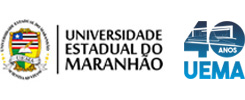Use este identificador para citar ou linkar para este item:
https://repositorio.uema.br/jspui/handle/123456789/3040| Título: | Liberdade nossa África: de Matadouro à Quilombo Urbano |
| Título(s) alternativo(s): | Freedom our Africa: From Slaughterhouse to Urban Quilombo. |
| Autor(es): | Muniz, Geysa Pinto |
| Orientador: | Borralho, José Henrique de Paula |
| Data do documento: | 2018 |
| Editor: | Universidade Estadual do Maranhão |
| Resumo: | O Bairro da Liberdade é um dos mais antigos da cidade de São Luís. Geralmente é veiculado na mídia por questões relacionadas à violência, desigualdade social, mas também por ser berço de muitas manifestações culturais. Surgiu ainda no início do século XX, numa pequena área chamada de Campina e com a chegada do Matadouro municipal à localidade, o bairro passa a se chamar de Campina do Matadouro. Em 1967, na gestão do Prefeito Epitácio Cafeteira, há a transição do nome, de Matadouro, torna-se Liberdade. No ano de 2010, durante o período do Censo Demográfico realizado pelo Instituto Brasileiro de Geografia e Estatística, notou-se que a população residente no Bairro, é em sua grande maioria negra, e nos questionários aplicados pelos recenseadores, grande parte se declarou preta/parda, segundo a denominação utilizada pelo IBGE. Atualmente, a comunidade busca o reconhecimento do bairro como quilombo urbano, devido a características presentes na comunidade e pela luta de grupos militantes em prol da preservação da identidade negra. |
| Resumo: | The Freedom neighborhood is one of the oldest in the City of São Luis. It is usually broadcast in the media for problems related to violence, social inequality, but also to be the cradle of many cultural manifestations. It also emerged in the early 20th century, in a small area called Campina and the with the arrival of the municipal slaughterhouse to the locality, the neighborhood is called Campina the Slaughterhouse. In 1967, in the management of the Mayor Epitácio Cafeteira maker, there is the transition of the name, from Slaughterhouse, becomes Freedom. In the year 2010, during the period of the Demographic Census conducted by the Institute of Geography Statistics, it was noted that the population residing in the neighborhood is mostly black, and in the questionnaires aplied by the enumerators, muchof it was declared black/brown, according to the name used by IBGE. Currently, the community seeks recognition of the neighborhood as an urban quilombo, due to characteristics present in the community and the struggle of militant groups for the preservation of black identity. |
| Palavras-chave: | Liberdade Matadouro Censo Negros Quilombo Urbano Identidade Freedom Slaughterhouse Blacks Urban Quilombo Identity |
| Aparece nas coleções: | Curso de Licenciatura em História - CECEN - UEMA - Monografias |
Arquivos associados a este item:
| Arquivo | Descrição | Tamanho | Formato | |
|---|---|---|---|---|
| MONOGRAFIA - Geysa Pinto Muniz- HISTÓRIA UEMA 2018.pdf | 704.48 kB | Adobe PDF | Visualizar/Abrir |
Os itens no repositório estão protegidos por copyright, com todos os direitos reservados, salvo quando é indicado o contrário.
